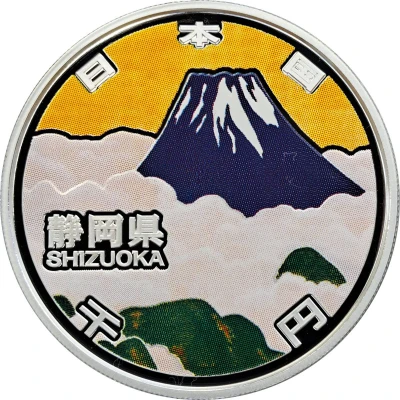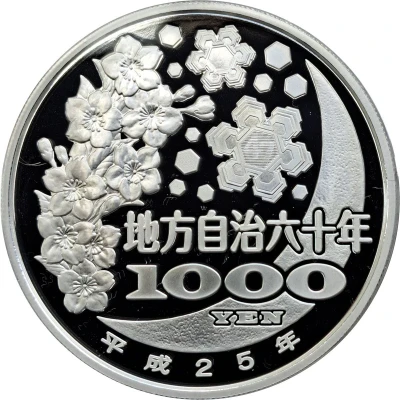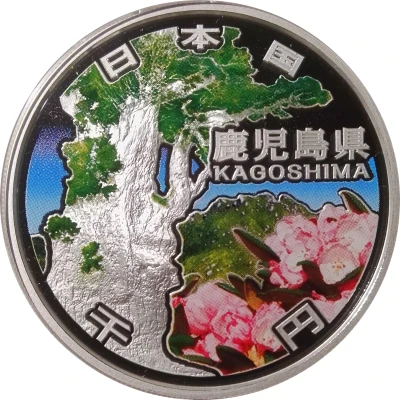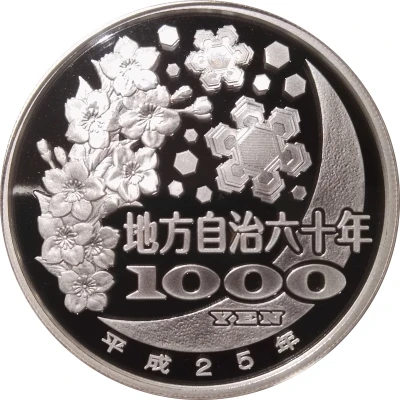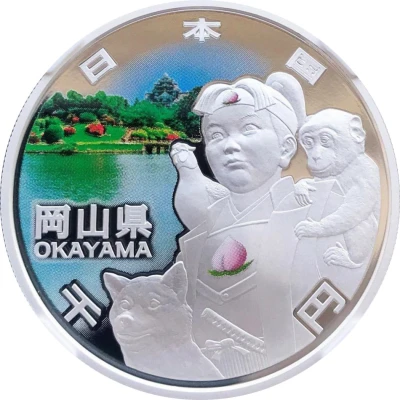
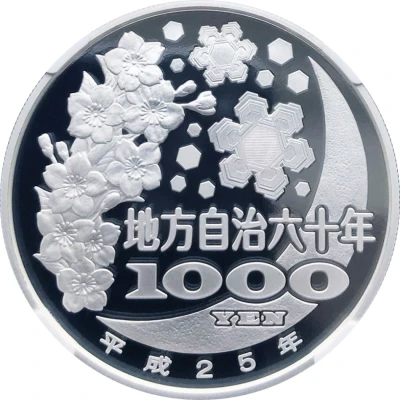

© coinsupermarket2012
1000 Yen - Heisei Okayama
25 (2013) year| Silver (.999) | 31.1 g | 40.0 mm |
| Issuer | Japan |
|---|---|
| Emperor | Heisei (1989-2019) |
| Type | Non-circulating coin |
| Year | 25 (2013) |
| Calendar | Japanese - Heisei era |
| Value | 1000 Yen 1000 JPY = USD 6.72 |
| Currency | Yen (1871-date) |
| Composition | Silver (.999) |
| Weight | 31.1 g |
| Diameter | 40.0 mm |
| Thickness | 3.5 mm |
| Shape | Round |
| Technique | Milled, Coloured |
| Orientation | Medal alignment ↑↑ |
| Updated | 2024-10-05 |
| Numista | N#123678 |
|---|---|
| Rarity index | 83% |
Reverse
Cherry blossoms, crescent and snowflakes.
Latent images in largest snowflake.
Lettering:
(47/60)
地方自治六十年
1000
YEN
平成25年
Translation:
60 years of local autonomy
1000
Yen
Year 25 of Heisei
Edge
Slanted reeding right
Comment
Okayama Kōrakuen Garden is a Japanese garden with a path around a central pond and the current total site area is 13.3 hectares. It took 14 years for the construction by Tsuda Nagatada ordered by the domain lord of Okayama; Ikeda Tsunamasa. It is known as one of the three most beautiful gardens in Japan as well as Kairakuen Garden in Mito (Ibaraki Pref.) and Kenrokuen Garden in Kanazawa (Ishikawa Pref.). Donated to Okayama Prefecture in 1871 and designated as the special place of scenic beauty by the Japanese government in 1952.Momotarō or the Peach Boy, a popular hero from a folklore, which was read to everyone in childhood in Japan. In this folklore story, Momotarō born from a peach, wiped out ogres or demons with the followership of a dog, a monkey and a pheasant. It is said that Okayama is the Momotarō's country not only because of the local legend, but also of the peach-producing area as well as the place famous for millet dumplings, which were gifted from Momotarō to the three animals in the story.
Interesting fact
The 1000 Yen - Heisei (Okayama) 25 (2013) coin from Japan features a unique design that showcases the country's rich cultural heritage. The obverse side of the coin depicts a beautiful image of the Korakuen Garden, a famous Japanese garden located in Okayama, while the reverse side features the Imperial Seal of Japan, which is a symbol of the country's rich history and tradition. The coin's design is a great representation of Japan's commitment to preserving its cultural heritage and tradition, while also showcasing its beauty and elegance to the world.
Price
| Date | Mintage | VG | F | VF | XF | AU | UNC |
|---|---|---|---|---|---|---|---|
| 25 (2013) | 100000 | - | - | - | - | - | - |
Values in the table are based on evaluations by sales realized on Internet platforms. They serve as an indication only for 1000 Yen - Heisei (Okayama) 25 (2013) coin.
